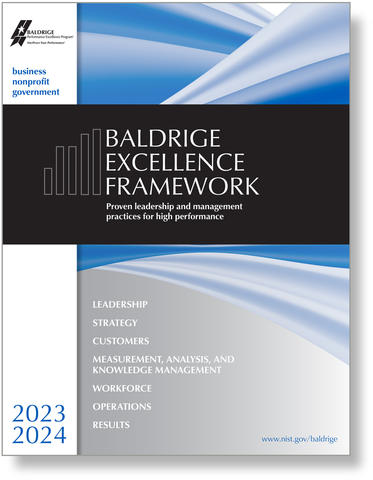Blogrige
The Official Baldrige Blog

Permit me the opportunity to ramble a little, and then I will pull all my musings together.
New York Times Puzzles
I enjoy solving puzzles! I start each morning by doing at least two New York Times puzzles, Wordle and Connections. My wife and my sons and their spouses do the same, although not necessarily as part of their early-morning routine (except on weekends). We have a texting thread where we each report our daily scores, together with some running commentary on how we (or one of the others) performed that day. While we are hundreds of miles apart, these texts keep us in daily contact.
I have some friends with the daily habit of doing the same puzzles, but they do the puzzles together as a team. Unless we solo performers get a perfect score, those who use the team approach almost always score better than we do on Connections. As a team, they can discuss the connections between apparently disparate words, help each other see connections their team member did not see, and reach a consensus opinion about the linkages.
Analytical Chemistry
I am an analytical chemist by training. When I worked in the laboratory, my specialty was mass spectrometry. The technique has use for both quantitative and qualitative analysis applications. The qualitative applications involve piecing together the structure of unknown molecules from their molecular fragments. This career path was fascinating because I was always solving puzzles — and getting paid to do it!
Google Research
Google research indicates that people like to solve puzzles because our brains like things to fit together. We like to make order out of chaos. Doing jigsaw puzzles is the ultimate example.
Freakonomics
I recently listened to a Freakonomics podcast entitled, "Are Two C.E.O.s Better Than One?" The findings were mixed, but when the two leaders had complementary skills and compatible personalities, the answer was generally yes. Two brains were better than one; and for critical meetings, the CEO could be in two places at one time.
The Connection
How is all of this information related? Now I will start pulling it all together. We are by nature social creatures. We need ongoing human contact. We also all enjoy making order out of chaos. Even when my family competes on puzzles, the relationship building through the daily contact and bantering keeps us together and makes us stronger. When two people solve puzzles together or share CEO responsibilities, they build on each other's strengths and can solve problems that neither might solve alone or at the same speed. Teamwork leads to better and quicker solutions and to innovation.
Now let's consider what this has to do with our work environments. Many of us just completed several years of working in isolation in individual home offices. Not needing to commute was nice, but we had to develop new ways to avoid isolation and to carry out teamwork (think MS Teams, Zoom, and other tools that rapidly grew). The informal opportunities for being innovative through collaboration were harder to realize "without the ability to meet at the water cooler." We are now trying to figure out how to conduct hybrid work and establish new routines for in-office/job-site work that will foster the social contact and opportunities for greater innovation.
During our isolation, many employees were initially uncomfortable with — though they eventually enjoyed — new levels of empowerment. Leaders and managers must now respect that empowerment, and establish new work routines that are sensitive to organizational needs and to the desires of employees. Leaders must also be sensitive to the needs of middle managers, many of whom feel a new loss of control; leaders need to help middle managers adapt to roles that include more coaching, mentoring, and joint problem solving (teamwork).
Baldrige Excellence Framework®
The Baldrige Excellence Framework® has concepts and criteria that address these important topics. The Baldrige core value Valuing People addresses the needs of "an engaged workforce that benefits from meaningful work, clear organizational direction, the opportunity to learn, and accountability for performance. That workforce must also have a safe, trusting, and cooperative environment." The Baldrige core value Focus on Success and Innovation addresses the needs of an organization to understand and address "the factors that affect your organization and its environment ... and the ability to drive organizational innovation."
Item 1.1 of the Baldrige Criteria for Performance Excellence, Senior Leadership, asks how senior leaders encourage frank two-way communication; motivate the workforce; and create and reinforce an organizational culture that fosters engagement, safety, diversity, equity, and inclusion. It also asks how leaders cultivate organizational agility, resilience, learning, and innovation.
Item 5.2, Workforce Engagement, asks how that workforce culture fosters open communication and high performance. It also asks about key aspects of your workforce performance management, and workforce learning and development systems, and how those systems encourage intelligent risk taking.
These concepts and questions are all available to you. They will need to be addressed and readdressed frequently. How will you answer the questions to drive engagement and high performance in our ever-changing environment? This is a puzzle you and your team can solve!

Baldrige Excellence Framework®
The Baldrige Excellence Framework® has empowered organizations to accomplish their missions, improve results, and become more competitive. It includes the Criteria for Performance Excellence®, core values and concepts, and guidelines for evaluating your processes and results.
Purchase your copy today!
Available versions: Business/Nonprofit, Education, and Health Care





